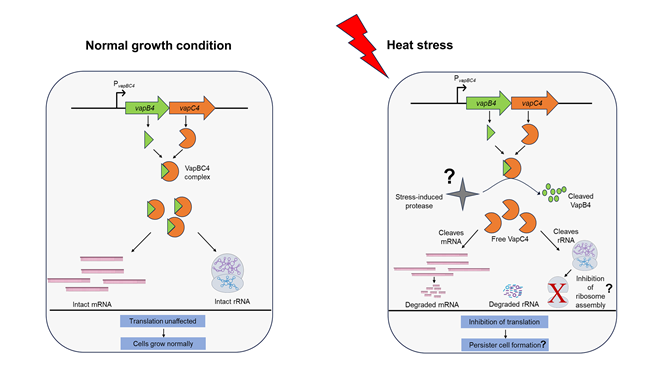Study of archaea, a domain of ancient organisms have given scientists clues to survival strategies of microorganisms by adapting to harsh conditions with the help of their toxin-antitoxin (TA) systems.
As the planet’s climate changes rapidly, with ocean and surface water temperatures rising, it’s becoming more important to understand how some of the earliest heat-loving organisms developed ways to survive in extreme heat. Archaea, which means "ancient things" in Greek, are one of the oldest forms of life on Earth and belong to a group called the third domain of life. Many archaea live in some of the harshest environments on Earth, which makes them ideal for studying how life can survive in tough conditions.
Dr. Abhrajyoti Ghosh and his team at the Department of Biological Sciences at Bose Institute, an autonomous institute of the Department of Science and Technology (DST) sought to explore how certain archaea toxin-antitoxin (TA) systems help these organisms cope with high temperatures. Unlike the cell death processes in more complex organisms, archaea use different TA systems to help them survive stress from other living things and environmental factors. TA systems are found in many bacteria and archaea, which suggests they are important for evolution. However, we still do not fully understand what they do in archaea.
In a recent study published in the journal mBio (American Society for Microbiology), Dr. Ghosh and his team uncovered a novel function of the TA system in archaea. They studied a specific TA system in a heat-loving archaeon called Sulfolobus acidocaldarius to understand how it helps these organisms.
This study explores how this TA system helps this organism deal with stress, survive tough conditions, and form biofilms. By examining S. acidocaldarius, which lives in environments with hot volcanic pools like Barren Island in the Andaman & Nicobar Islands in India and some other volcanic areas in the world, that can get as hot as 90℃, the research highlights its unique challenges and how it survives.
The detailed analysis of the VapBC4 TA system that helps survival in the high temperature environment, shows its important role during heat stress. The findings reveal several functions of the VapC4 toxin, such as stopping protein production, helping the organism form resilient cells, and influencing biofilm creation. When the cell faces heat stress, a stress-activated protease (which hasn't been identified in archaea yet) may break down VapB4 protein (which otherwise checks VapC4 toxin's activity). Once VapB4 is gone, the VapC4 toxin is released and can stop protein production. This block in protein production is part of a survival strategy that helps cells form "persister cells" during stress. These persister cells go into resting state, conserving energy and avoiding making damaged proteins. This dormancy helps them survive tough conditions until the environment improves. Overall, this research enhances our understanding of TA systems in extreme environments and offers insights into how microorganisms adapt to harsh conditions.
Publication link: https://journals.asm.org/doi/10.1128/mbio.02753-24

Proposed model showing the mode of action of the VapBC4 TA system during heat stress.






























